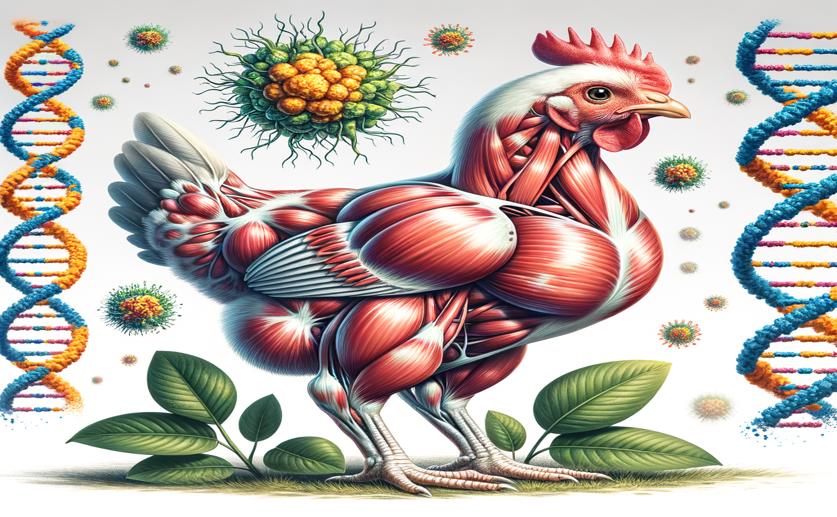
How Genes and Epigenetics Shape Muscle Growth in Young Chickens
Jenn Hoskins
6th July, 2024

Image Source: Natural Science News, 2024
Key Findings
- The study, conducted at China Agricultural University, focused on muscle development in two broiler breeds, Cornish (CC) and White Plymouth Rock (RR), over a 42-day period
- Researchers identified key genes and regulatory elements that are differentially expressed and accessible between day 21 (D21) and day 42 (D42), which are crucial stages for broiler growth
- The study found that rapid muscle growth in broilers involves continuous muscle damage and subsequent regeneration, highlighting the roles of genes like ACTC1, FDPS, NRG1, TGFB3, MUSTN1, and FOS
References
Main Study
1) Transcriptomic and epigenomic landscapes of muscle growth during the postnatal period of broilers
Published 4th July, 2024
https://doi.org/10.1186/s40104-024-01049-w
Related Studies
2) Comparison of muscle fiber characteristics and glycolytic potential between slow- and fast-growing broilers.
3) Nano-nutrition of chicken embryos. The effect of in ovo administration of diamond nanoparticles and L-glutamine on molecular responses in chicken embryo pectoral muscles.
4) Satellite cells and the muscle stem cell niche.



 25th June, 2024 | Jim Crocker
25th June, 2024 | Jim Crocker